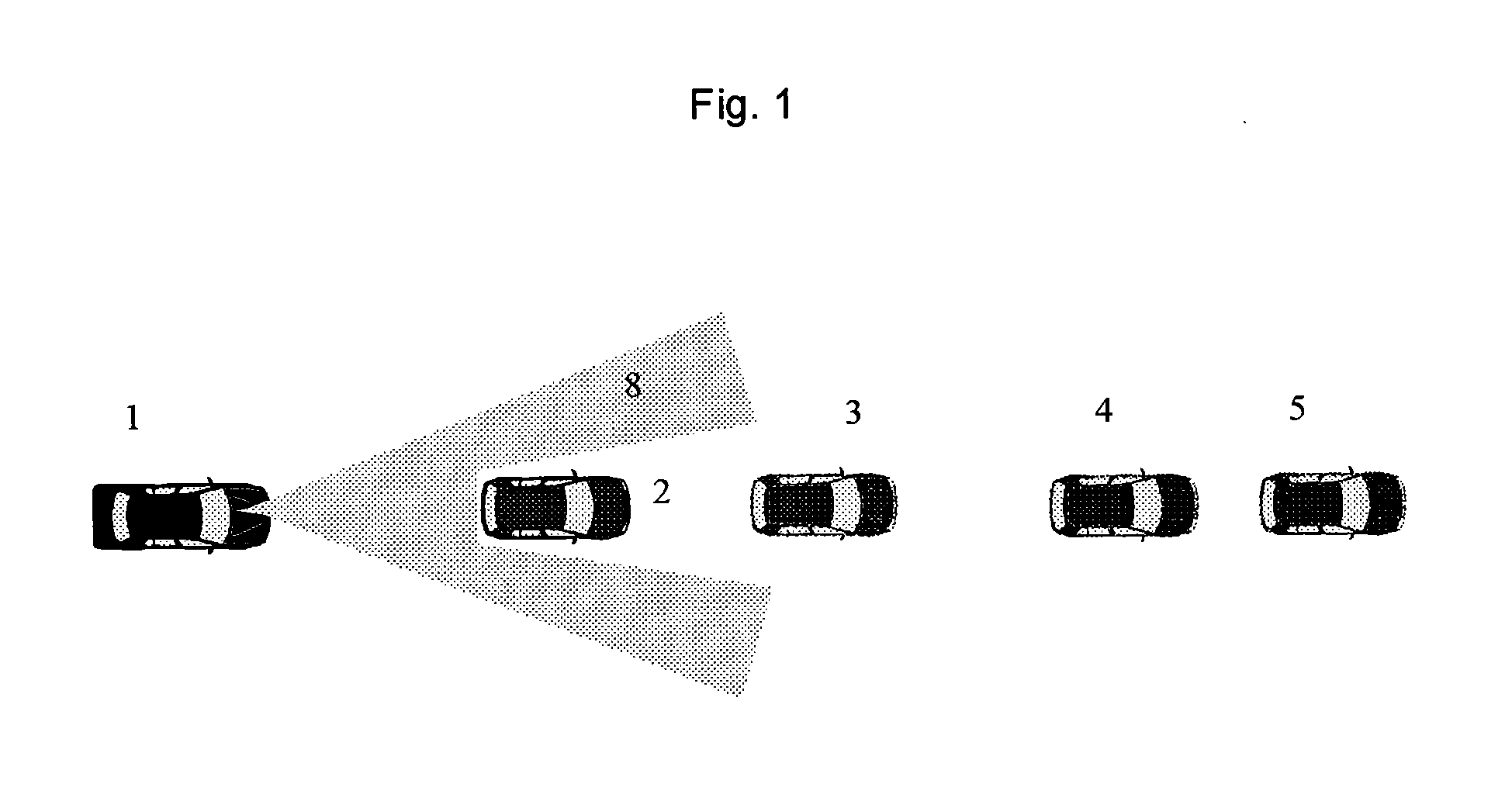System for Reducing The Braking Distance of a Vehicle
a technology for reducing the braking distance and vehicles, applied in the field of vehicle brakes, can solve the problems of taking time and lengthening the stopping distance, affecting the safety of vehicles, and no precise data about the current position
- Summary
- Abstract
- Description
- Claims
- Application Information
AI Technical Summary
Benefits of technology
Problems solved by technology
Method used
Image
Examples
Embodiment Construction
[0028]FIG. 1 represents a driving situation in front of a vehicle 1 in which the front vehicle area is monitored by the vehicle 1 by means of the sensors 8. If the vehicle-to-vehicle communication is made use of in addition to the radiation sensors 8, a highly expanded surroundings model which can be adapted dynamically is obtained.
[0029]There is no visibility restriction as a result of the vehicle-to-vehicle communication. Data can be exchanged between vehicles and other vehicles or an infrastructure around corners, for example can pass by intersections and other vehicles. A transmitting vehicle no longer has to be identified separately as a vehicle since the type of vehicle is also transmitted, and since stationary vehicles also transmit their position they are also detected.
[0030]If a vehicle 3, 4, 5 travelling in front brakes and the traction controller is deployed, the estimated coefficient of friction can also be transmitted and the intervention strategy and warning strategy c...
PUM
 Login to View More
Login to View More Abstract
Description
Claims
Application Information
 Login to View More
Login to View More - R&D
- Intellectual Property
- Life Sciences
- Materials
- Tech Scout
- Unparalleled Data Quality
- Higher Quality Content
- 60% Fewer Hallucinations
Browse by: Latest US Patents, China's latest patents, Technical Efficacy Thesaurus, Application Domain, Technology Topic, Popular Technical Reports.
© 2025 PatSnap. All rights reserved.Legal|Privacy policy|Modern Slavery Act Transparency Statement|Sitemap|About US| Contact US: help@patsnap.com


